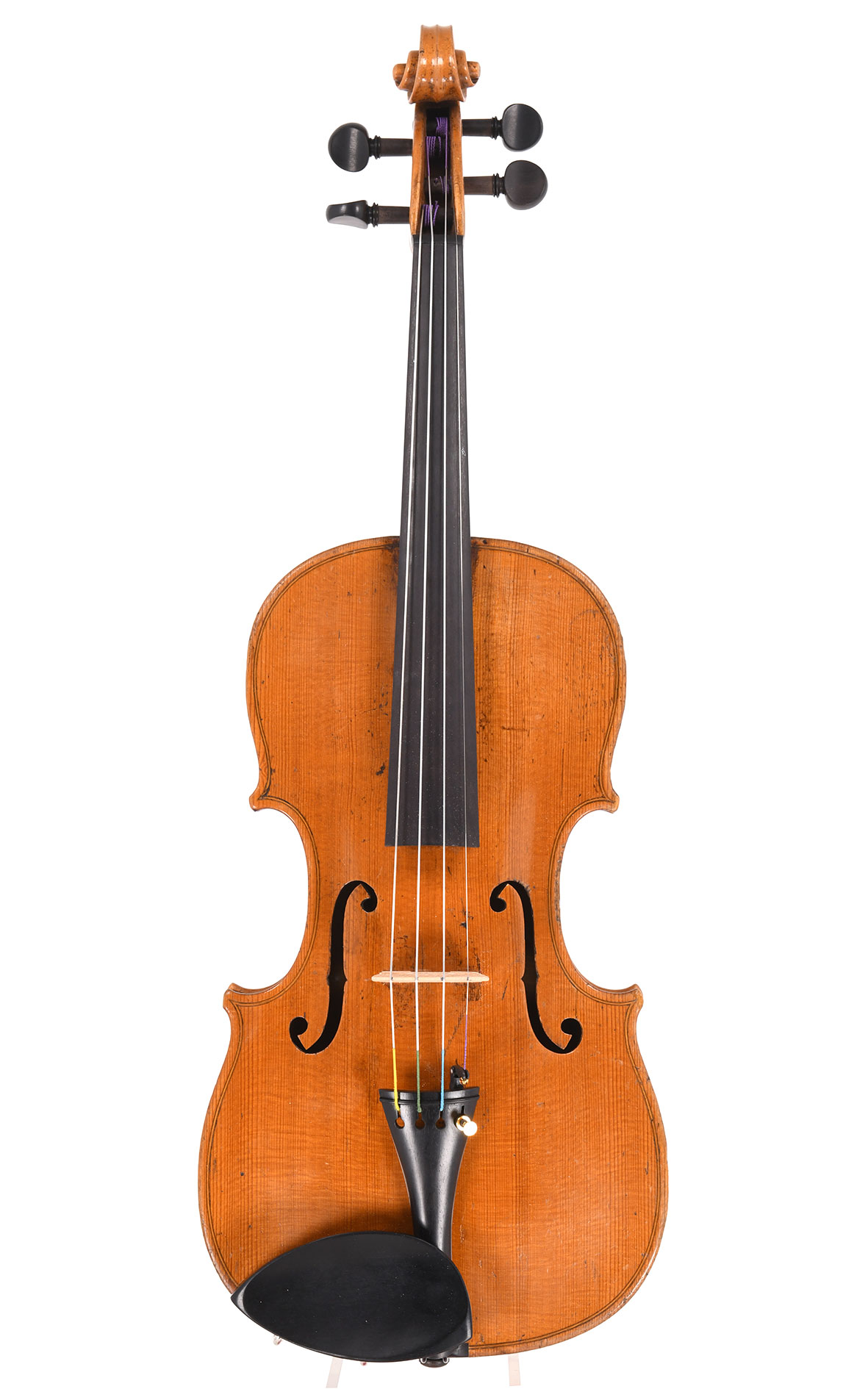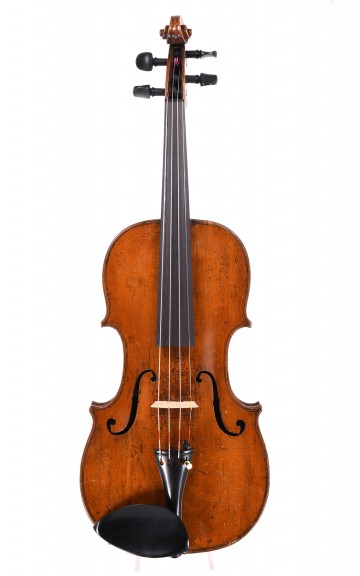Klingenthal: the origin of violin making in the Saxonian Vogtland region
In the early 1650s, the Hobe family from Hamburg settled in Klingenthal, a little town near the border between Saxony and Bohemia. Two generations prior, mining work had moved them from northern Germany to Kraslice (Graslitz) in what is now the Czech Republic, and now they wanted to escape the pressure of the re-Catholicisation which was spreading through the region after the Thirty Years' War. In nearby Unterklingenthal (now called Quittenbach), the family found a new home, where the father, Christoph Hobe, presumably worked as a foreman in the mines, as he had in Graslitz.

The Hobes and many other families felt welcome as “Bohemian exiles” in Saxony and found religious tolerance there, although it must be mentioned that the migrants paid a very high price in terms of taxes and obligations. The new settlers were a blessing to the remote Vogtland region, since they not only helped create communities such as Quittenbach, they also brought the art of violin making with them to Klingenthal, which went on to shape and sustain the region for centuries to come.
The first confirmed date in the history of Klingenthal violin making is 8 October 1669, when Johann Hertwig Graf von Nostiz confirmed that the Graslitz violin makers' guild had been established. The founding members included “Caspar Hobe” from Klingenthal, Christoph Hobe's son, who also ranked among the founders of the Markneukirchen guild under the name of “Caspar Hopf” on 6 March 1677. He is probably the first Klingenthal violin maker, and despite the fact that little is known about where he learned his art, a great deal is known about his defining style which made the Hopf school the epitome of the Klingenthal violin.
The decline and end of Klingenthal violin making
From the very outset, the Klingenthal tradition of violin making was more defined by solid musical quality than by a particularly progressive or nuanced aesthetic. The violin makers, who struggled due to the high fees they had to pay, were forced to sell their instruments quickly and in as large numbers as possible.
While violin makers initially travelled throughout the country to sell their work, the process of selling musical instruments became more professional over the course of the 18th century. Although they remained self-employed, many violin makers ended up growing increasingly dependent on merchants who wanted to satisfy the constantly rising international demand for inexpensive instruments. In the 1801 “Geography of the electoral and ducal Saxonian state,” Friedrich Gottlob Leonhardi documented the year's remarkable production figures: “117 basses and 4282 violins at a value of 2416 reichsthaler and 12 groschen without the harps, zithers, lutes, etc.” As the production process became more industrialised and serialised, the relatively privileged social status of violin makers continued to erode.
Shift to industrial production of musical instruments
From the 1830s onward, the economic structure of the Vogtland underwent a fundamental shift. Large numbers of jobs in the less complex fields of manufacturing combs and harmonicas were created for workers with fewer skills; from the 1850s on, accordions were build as well. Many violin makers made an additional livelihood for themselves in these new businesses, and the demanding process of training apprentices waned over time. The American civil war contributed to the crisis among Vogtland violin makers, who had had one of their most important markets in the US. By 1862 only 166 individually-operated violin-making studios still survived, and in 1887, the Klingenthal guild of violin makers dissolved. It was re-founded in 1913 and existed until 1975; however, its low membership figures confirm that the art of violin making in Klingenthal never fully returned to its former glory.
Today, the vocational school of Vogtland instrument building carries on the Klingenthal tradition of violin making, the history of which is documented in the Markneukirchen museum of musical instruments.
Klingenthaler violin makers: Dörffel, Glass, Meisel and other important families of violin makers
The tradition of the large Hopf family has become synonymous with the art of violin making in Klingenthal, but from the very beginning the town's history was also honoured and carried forward by other significant dynasties of violin makers as well. This page briefly presents three other families, while other points of reference can be found in the PDF file of our overview (which is certainly not complete) of Klingenthal violin makers (approx. 140 KB).
Dörffel - early violin makers of Klingenthal
The Dörffel family was among the Bohemian immigrants who established Klingenthal violin making. Whereas Caspar Hopf was assumed to be the first violin making master in his family, at least two other Dörffel relatives – Johann Georg (the first) and Michael – pursued their art in Graslitz (Kraslice, Czech Republic). Johann Andreas Dörffel, who was active in the first half of the 18th century, is ranked among the finest violin makers in Klingenthal. His instruments can be found in numerous collections.
The Glass violin makers
Documents confirm that the Glass family of violin makers lived in Klingenthal from the 18th century onward. Their instruments earned a solid reputation which at times even approached the ranks of the legendary Hopf violins. Many members of the family worked outside Klingenthal and became ambassadors of the art of Vogtland violin making, on an international level as well. In the late 18th century, Christian Friedrich Glass began making bows in Klingenthal.
The Meisel family of Klingenthal violin makers
In some regards, the Meisels, the great family of instrument makers, represented the process of Klingenthal violin making opening to new influences. Starting in the late 18th century, important members of the family broke with the distinctively Vogtland-based Hopf tradition and began to imitate Italian models. These craftsmen included Amand Meisel (1828-1893), who became an internationally renowned master and settled in Silesia in the mid-19th century. Johann Christian Friedrich Meisel (d. 1803) first produced strings in Klingenthal.
Further reading:
Markneukirchen: violin making in “German Cremona”
Bow maker an entrepreneur H. R. Pfretzschner
Ernst Heinrich Roth: a rediscovered master
Crossing borders: on the history of violin making in western Bohemia
Hopf: a dynasty of Vogtland violin makers
Contemporary violin makers - the modern artisans





